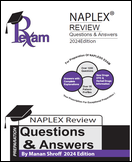
Poison Ivy rash is an example of:
a. Type I Hypersensitivity
b. Type II Hypersensitivity
c. Type III Hypersensitivity
d. Type IV Hypersensitivity
e. Type V Hypersensitivity
Poison Ivy rash is an example of:
a. Type I Hypersensitivity
b. Type II Hypersensitivity
c. Type III Hypersensitivity
d. Type IV Hypersensitivity
e. Type V Hypersensitivity
Answer: (d), Type 4 hypersensitivity is often called delayed type. Delayed hypersensitivity does not start to be noticeable until several hours to a full day after exposure to the antigen. It may last for over a week.
Poison ivy rash is caused by an allergic reaction to an oily resin called urushiol (u-ROO-she-ol). This oil is in the leaves, stems and roots of poison ivy, poison oak and poison sumac. Urushiol, which is a hapten, when absorbed through the skin from a poison ivy plant, it (urushiol) undergoes oxidation in the skin cells to generate the actual hapten, a reactive molecule called a quinone, which then reacts with skin proteins to form hapten adducts.
T lymphocytes recognize the foreign substances, usually after the antigen is eaten, degraded, and presented (in pieces) by so-called antigen-presenting cells such as Langerhans cells in the skin, or macrophages. Urushiol metabolites (metabolite of Poison Ivy) are presented by this and other mechanisms. The T lymphocytes pour out inflammatory signal substances called cytokines. These call in armies of white blood cells called monocytes, which become macrophages. The macrophages become activated by the cytokines and attack everything in the vicinity, and can cause severe tissue damage.
Usually, the first exposure causes only sensitization, in which there is a proliferation of effector T-cells. After a subsequent, second exposure, the proliferated T-cells can become activated, generating an immune reaction that produces typical blisters of a poison ivy exposure.
In addition to poison ivy, a good example is the skin reaction to injected tuberculosis antigen. In fact, when tuberculosis bacteria infect the lung, it is the delayed hypersensitivity against them which destroys the lung. Unlike the other types, it is not antibody mediated but rather is a type of cell-mediated response.
https://www.pharmacyexam.com/images/questions/A7162.png
Try our Naplex QBank. www.pharmacyexam.com **Please note: This type of question will not show up in an MPJE. We are just posting to MPJE group for knowledge.



